Throughout April and May 2022, there are multiple opportunities to observe planets Mercury, Venus, Mars, Jupiter, Saturn and Uranus in the sky from the northern hemisphere, making for a fantastic planetary parade perfect for beginners, kids and seasoned astronomers.
Here we'll reveal which planets are going to be visible in the sky, which planets will appear side-by-side, when and where to see them and, if you scroll down further, how to photograph them.
Close meetings in the sky between planets, Moons, stars and other celestial objects are known as conjunctions, and are great events to observe with the naked eye or through binoculars.
Indeed, conjunctions with the Moon can be an opportunity to use our lunar companion as a jumping-off point, helping you star-hop to a star or planet that might otherwise be tricky to locate.
After all, most people should be able to find the Moon in the morning or evening sky.
There are a number of interesting morning meetings of planets in April 2022, ending with a spectacular conjunction of Venus and Jupiter on 1 May.
Below is our guide to observing the planets in May 2022. If you are reading this during late April, scroll down further to find out what's happening in the sky as May approaches.
Throughout this guide we'll be stating the magnitudes of the planets in question, which is simply how astronomers talk about the apparent brightness of a celestial object. For help understanding this, read our guide to stellar magnitude.
Planets during May 2022
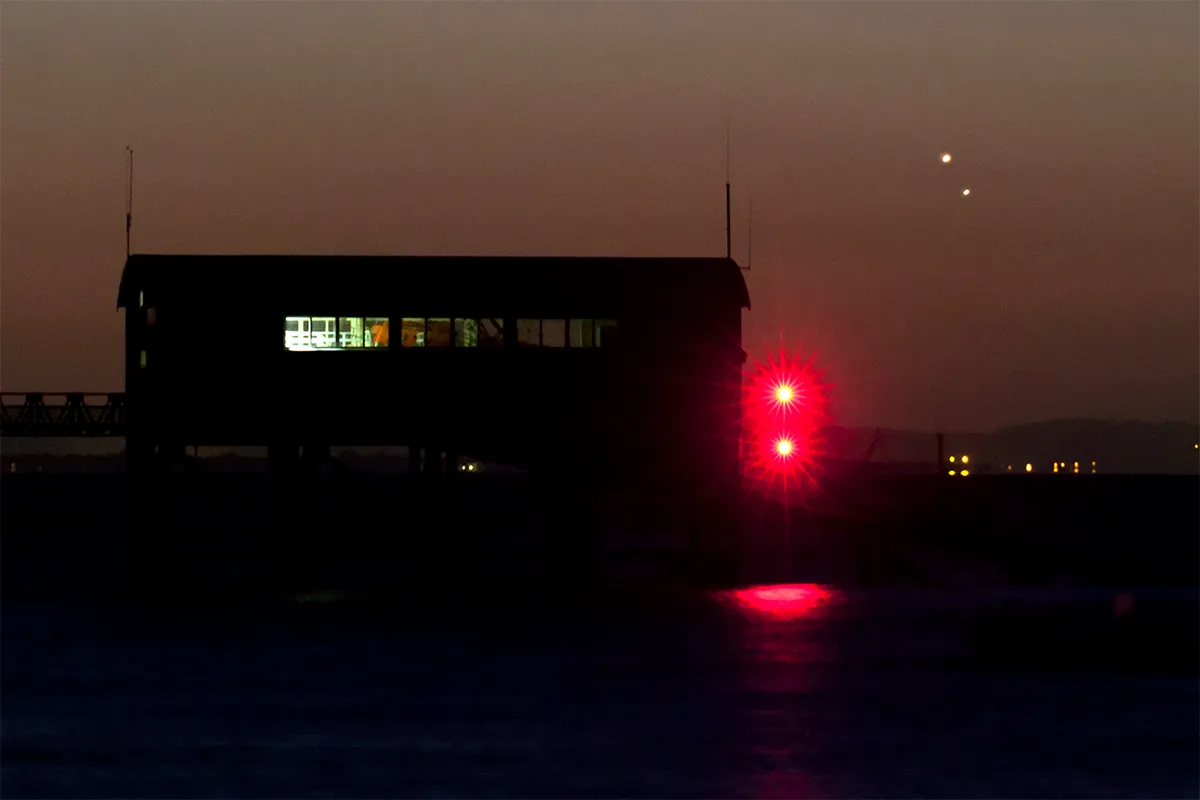
There are several impressive conjunctions occurring this month.
On 1 Maythe bright planets Venus and Jupiter appear close in the morning sky.
The position for this conjunction isn’t ideal as the pair remain low as dawn breaks. However, with a clear eastern horizon it should be possible to see them both.
Their visibility is assisted by their brightness, Jupiter at mag. –2.0 and Venus at mag. –4.0. At 05:00 BST (04:00 UT) they appear 22 arcminutes apart, less than the apparent diameter of the full Moon.
On subsequent mornings, both planets will appear to separate, with Jupiter appearing west of Venus.
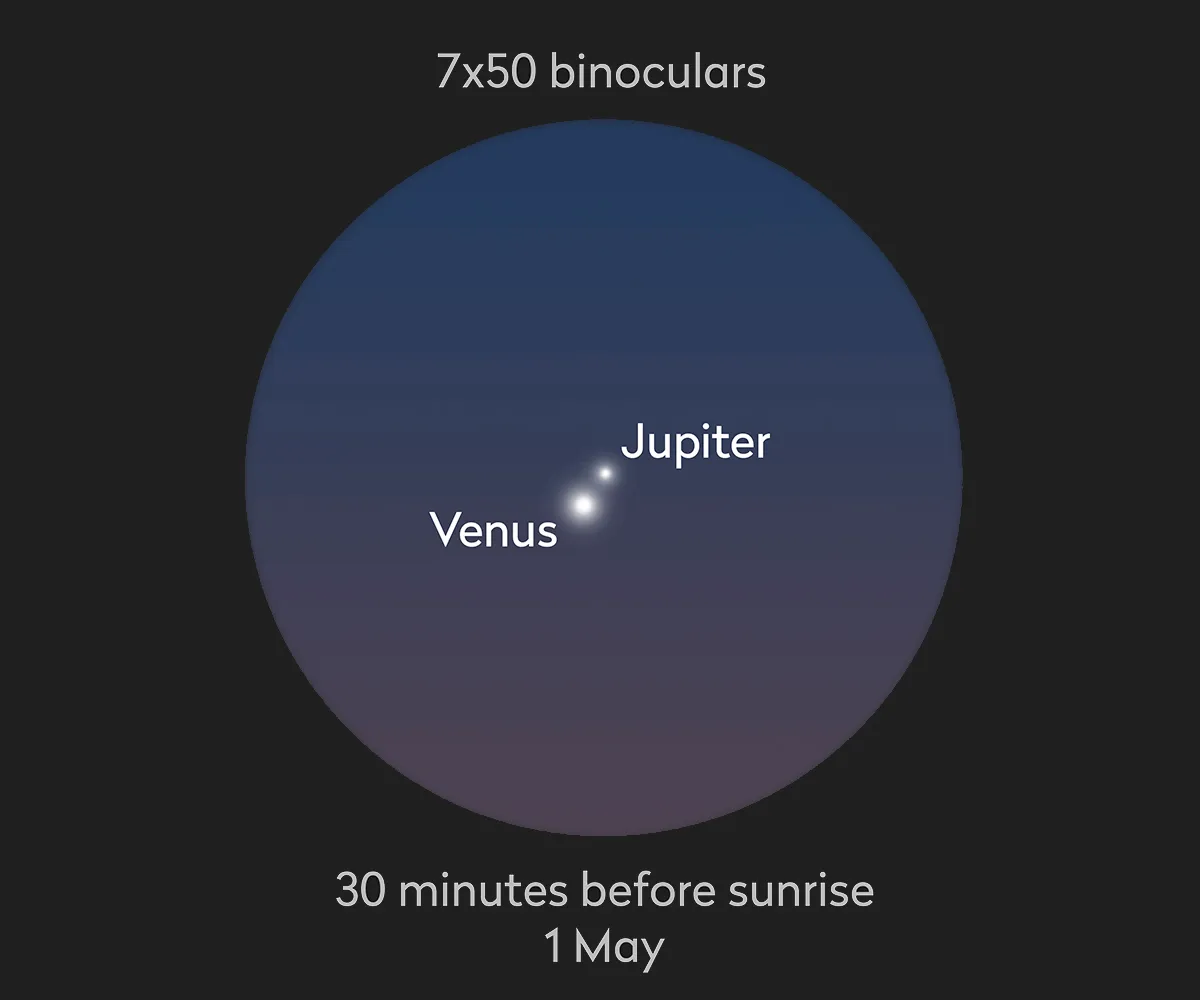
By 5 May, their apparent separation will have increased to 4˚, which is the equivalent of eight apparent diameters of the full Moon.
All the while, Mars will be heading in from the west. Before it meets up with Jupiter later in the month, Mars passes half a degree to the south of mag. +7.9 Neptune on the morning of 18 May.
This meeting takes place under twilight conditions and in honesty, with low altitude it’s unlikely to be that easy to see.
Mag. +7.9 Neptune will be extremely hard to see against a brightening morning sky, mag. +0.8 Mars less so. Perhaps this is an interesting exercise for a camera to try and record.
Also on 18 May, mag. –2.0 Jupiter lies 6.5˚ to the east-northeast of Mars.
On the morning of 22 May, the 57%-lit waning gibbous Moon lies 5.8˚south of mag. +0.8 Saturn.
Having brightened to mag. +0.7, Mars meets mag. –2.1 Jupiter on the mornings of 25–31 May.
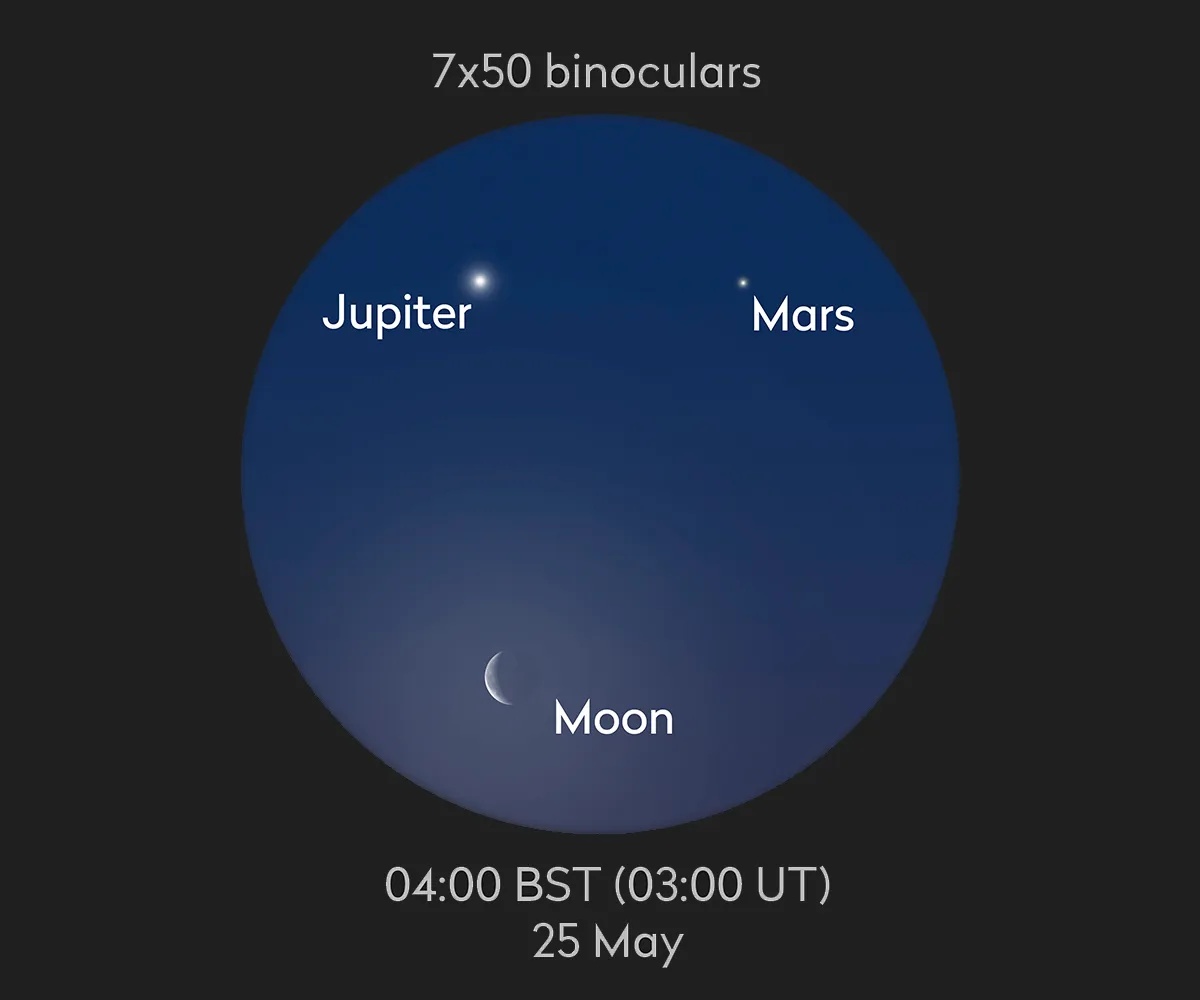
Again, the dawn twilight will be brightening as the pair gain altitude, but their relative brightness should allow both planets to be seen fairly easily with the naked eye.
In order to spot them, find a location with a flat, clear eastern horizon.
They rise around 03:00 BST (02:00 UT). On the morning of 25 May, a 25%-lit waning crescent Moon sits to the south of Mars, adding an extra element to this show.
On 27 May, as they rise above the east-northeast horizon, mag. –3.9 Venus appears 1.1˚ from the centre of the 10%-lit waning crescent Moon.
Given a flat horizon, both objects will be visible from the centre of the UK at 04:00 BST (03:00 UT).
On the morning of 29 May, mag. –2.1 Jupiter and mag. +0.7 Mars appear 0.6˚ apart. Catch them rising in the east around 03:00 BST (02:00 UT).
Planets during April 2022
Mercury will also be a planet to keep an eye on in April, but will appear in the evening sky from mid-month onwards. For more info on this, read our guide to observing the planets in April.
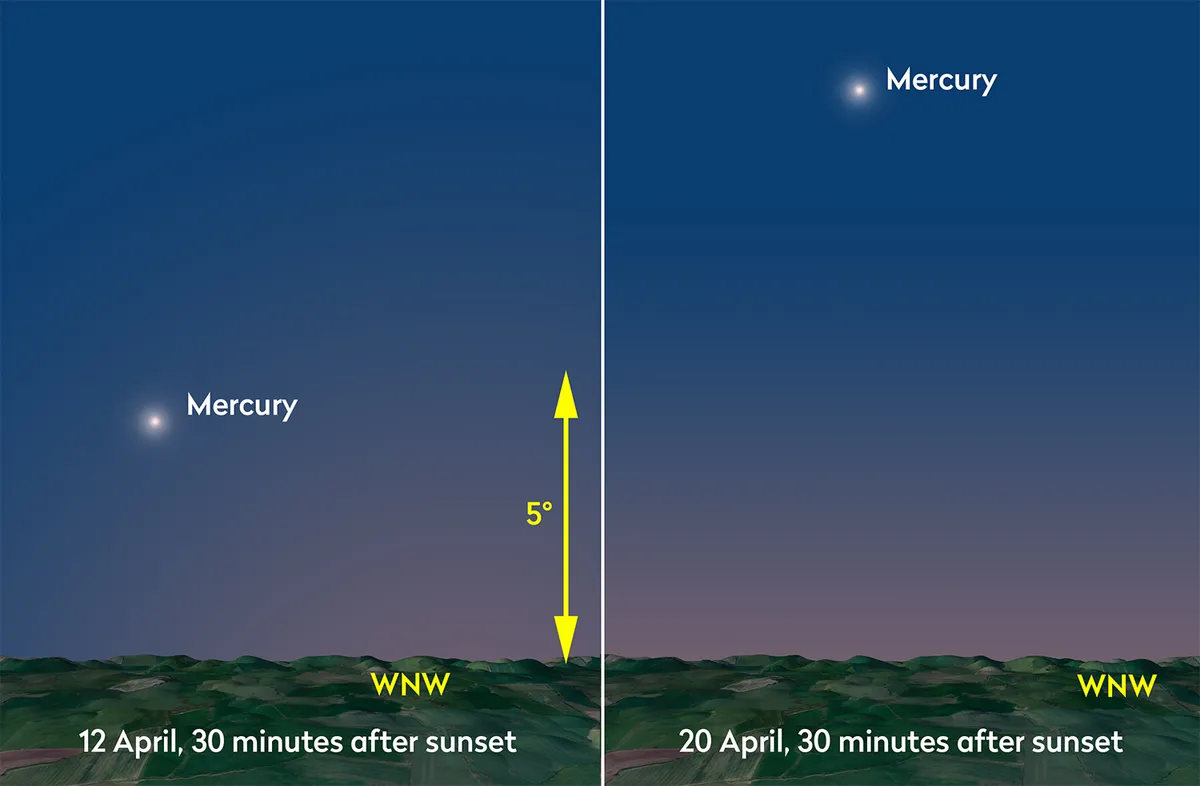
At the start of April, mag. –4.2 Venus rises above the east-southeast horizon, 80 minutes before sunrise.
The bright planet lies near to mag. +0.9 Saturn and +1.1 Mars. This dimmer pair appears southwest (right, as seen from the UK) of Venus in the dawn twilight.
As the mornings pass, Venus heads east, leaving the group.
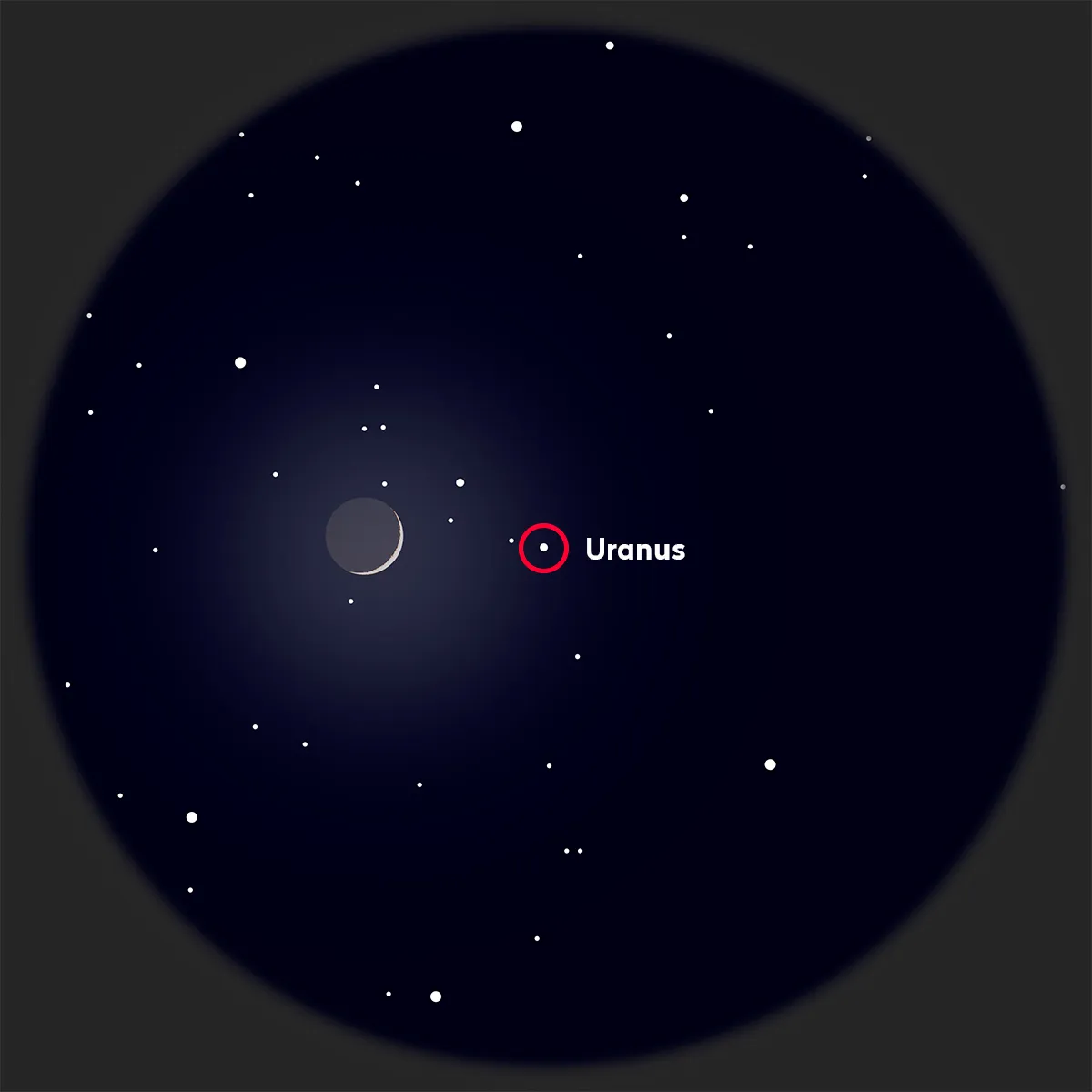
On 3 April, a 6%-illuminated waxing crescent Moon sits close to Uranus, which is always close to the naked-eye threshold from a dark-sky location.
On the evening of 3 April, Uranus will appear 1.1° from the Moon’s centre.
On the morning of 5 April, Mars and Saturn appear just 19 arcseconds apart with Venus 7.3˚ to the northeast (where 5° is about the width of your 3 middle fingers held out at arm's length).
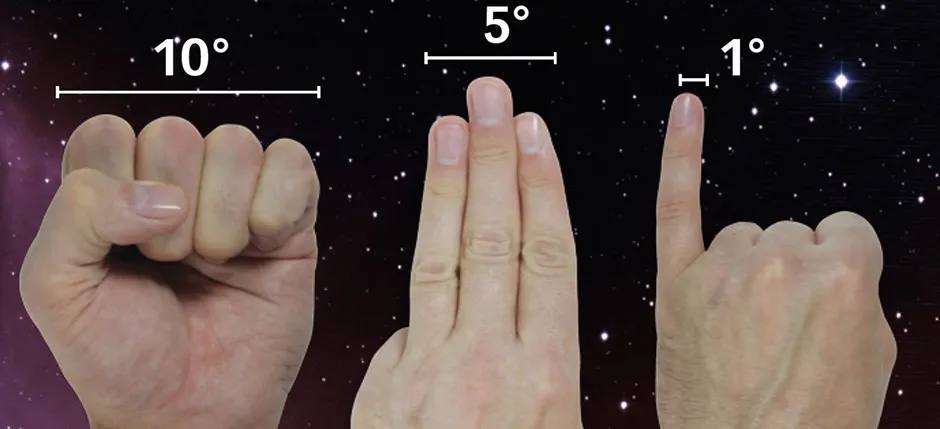
Mid-month, Jupiter enters the scene. On 14 April, Venus rises 70 minutes before sunrise, with mag. –1.9 Jupiter rising 30 minutes after Venus.
If you're really getting into the swing of things now, don't forget you can also observe the Lyrid meteor shower with the naked eye. The Lyrids' peak activity occurs on the night of 22/23 April.
On 24 April, there’s quite a parade of planets forming in the morning sky with, in order of greatest apparent distance from the Sun, Saturn, Mars, Venus and Jupiter all in a line.
This planetary parade is sure to be quite exceptional, providing you can get a clear view.
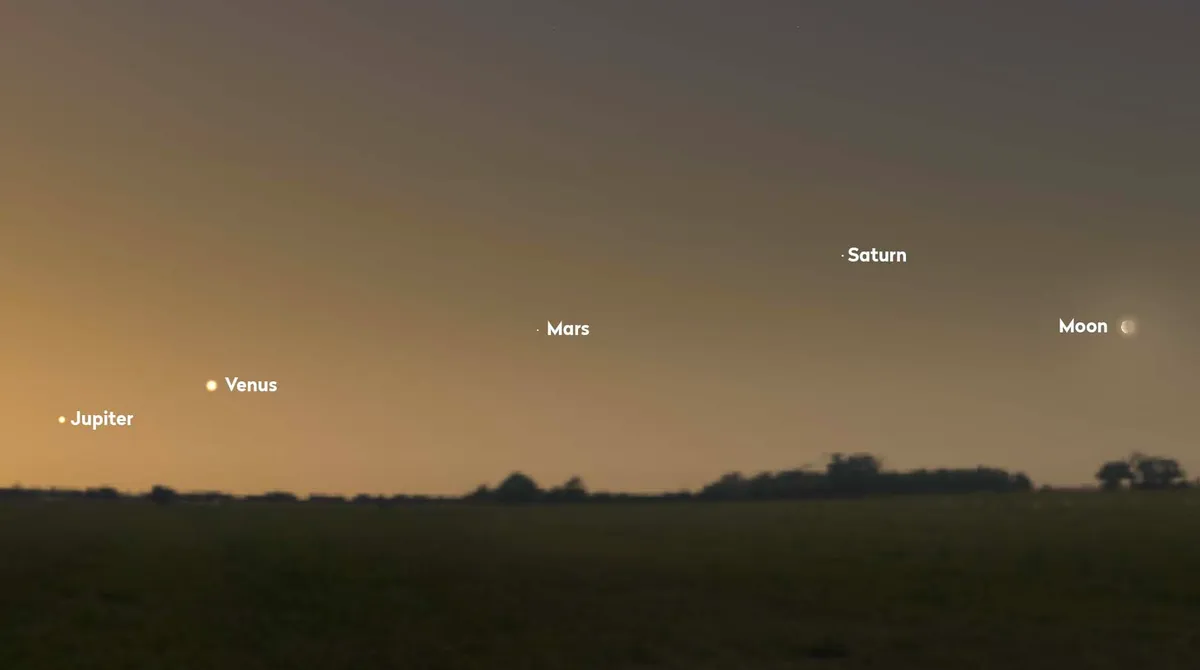
Coming back to Venus and Jupiter and their tango throughout April, over the remainder of the month both planets appear to converge.
On the morning of 27 April, Venus and Jupiter appear 3.4˚ apart, 4˚ north of a slender 13%-illuminated waning crescent Moon.
Both planets appear 2.5˚ apart on 28 April, 1.6˚ apart on 29 April, and 41 arcminutes apart on 30 April.
The closest approach is on 1 May, when Venus and Jupiter are separated by 22 arcminutes.
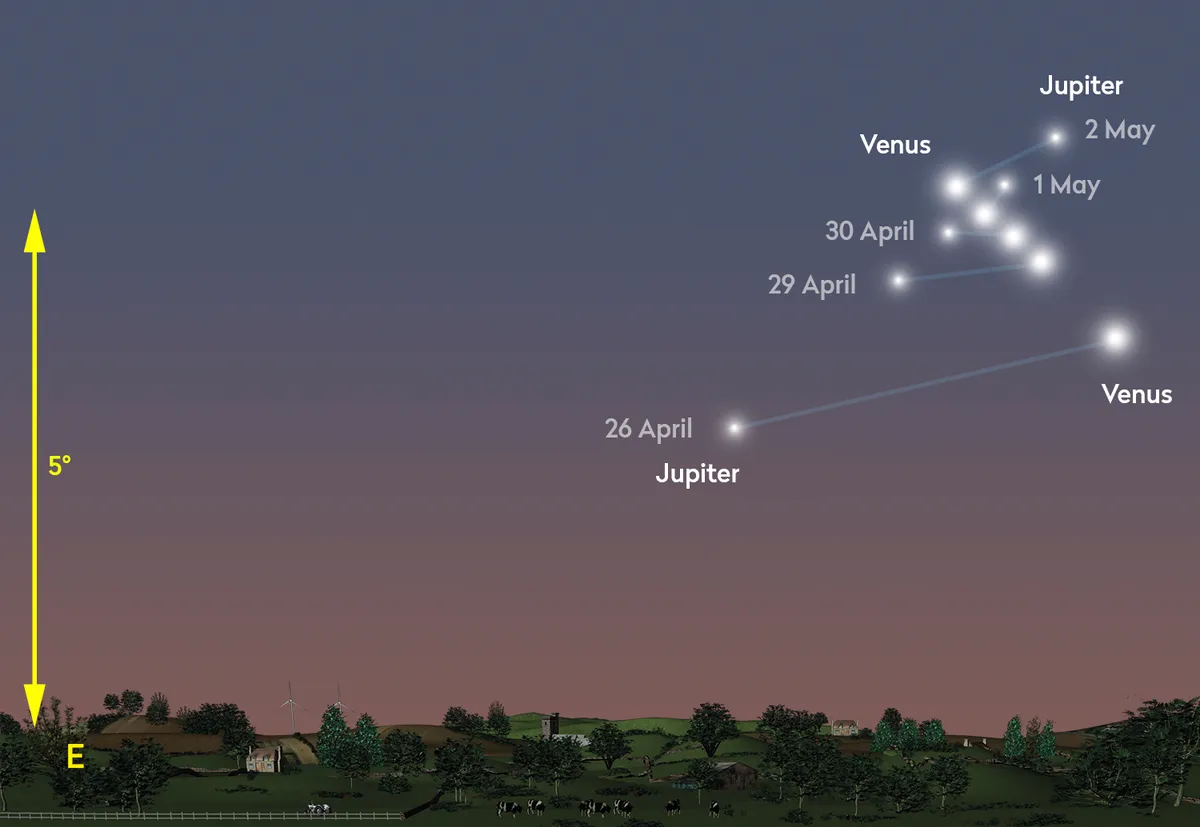
However, viewing the pair won’t be as straightforward as their impressive individual magnitudes suggest, and this is due to low altitude.
The best strategy is to catch Venus early in the month and stick with it.
At the month’s end, Venus and Jupiter rise an hour before the Sun and it should be possible to spot them 30–45 minutes before sunrise.
As an extra challenge, both planets can be seen in broad daylight; Venus with the naked eye, Jupiter with optical assistance.
Using Venus as a guide provides an opportunity to observe Jupiter in daylight.
By using a driven equatorial mount, you can pick up Venus in the early morning and stay with it until after sunrise.
However, care must always be taken when observing planets close to sunrise or sunset, or during daylight hours, as catching a glimpse of the Sun through binoculars or a telescope could seriously damage your vision.
If in doubt, don't attempt it!
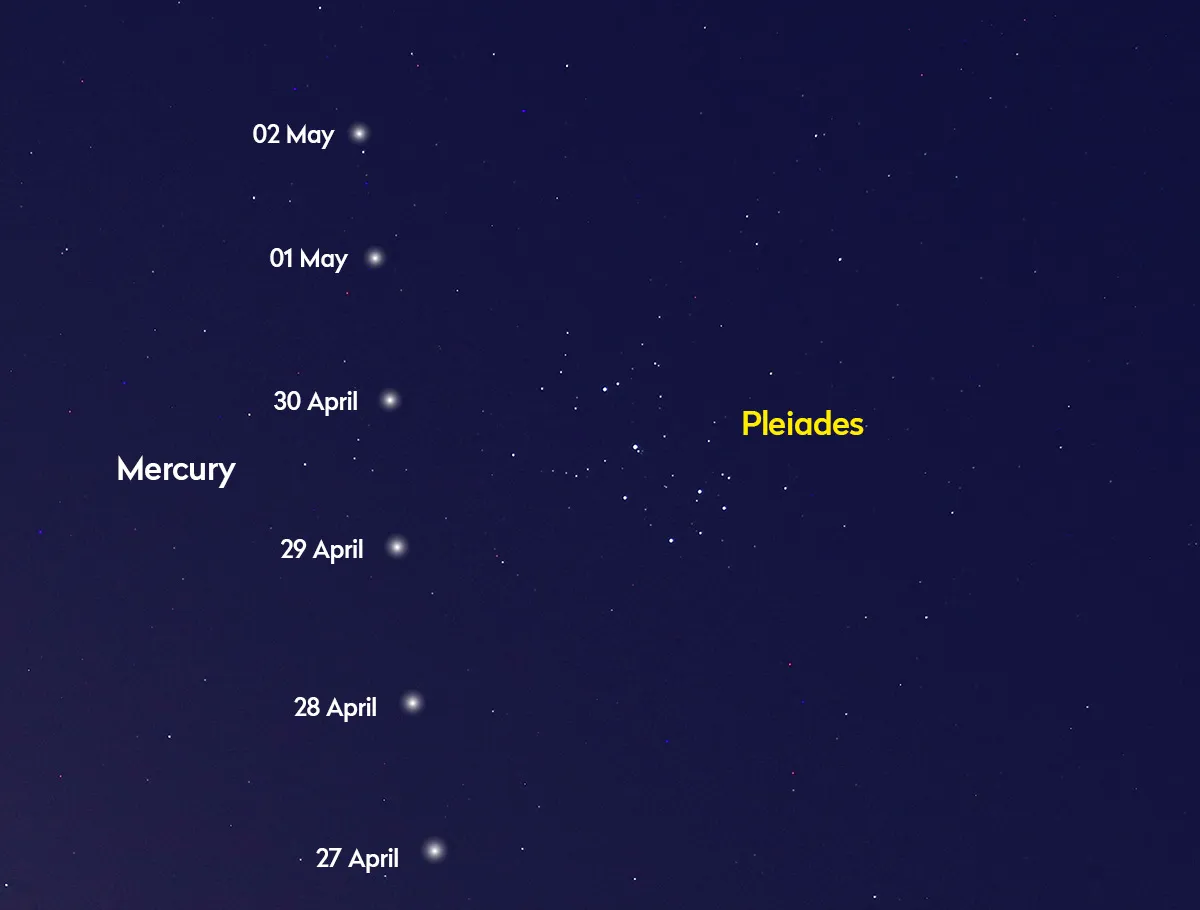
Another planet to keep an eye out for towards the end of April and into May will be Mercury, which makes its way past the Pleiades open star cluster over a series of nights.
If you begin observing the Pleiades on 27 April and take a look every evening until 2 May, you'll see Mercury saddle alongside the star cluster, changing its position bit by bit, night after night.
If you fancy photographing any of these planetary meetings, read on for our full astrophotography guide.
Photographing the planetary conjunctions
How can you make a photograph of Venus and Jupiter look like anything other than a pair of dots in the sky?
Fortunately, the geometry of this alignment will help. If you have a wide-field setup, the pair’s low altitude will allow you to incorporate some horizon in the shot.
Plus, the proximity of Venus to Jupiter on 1 May means it should be possible to capture both planets as discs through a telescope.
Venus will be showing a 68%-illuminated disc with an apparent diameter of 17 arcseconds on this date; Jupiter’s disc will be 35 arcseconds and accompanied by the Galilean moons.
Brightening dawn skies present unique issues for astrophotographers, because you need to adapt to conditions on almost a minute-by-minute basis.
The low altitude will mean you need to consider foreground objects carefully too, in case a conjunction moves behind a tree.
Equipment
- DSLR or equivalent camera with a telephoto lens
- Equatorial tracking mount
Photographing the planetary conjunction, step-by-step
Step 1
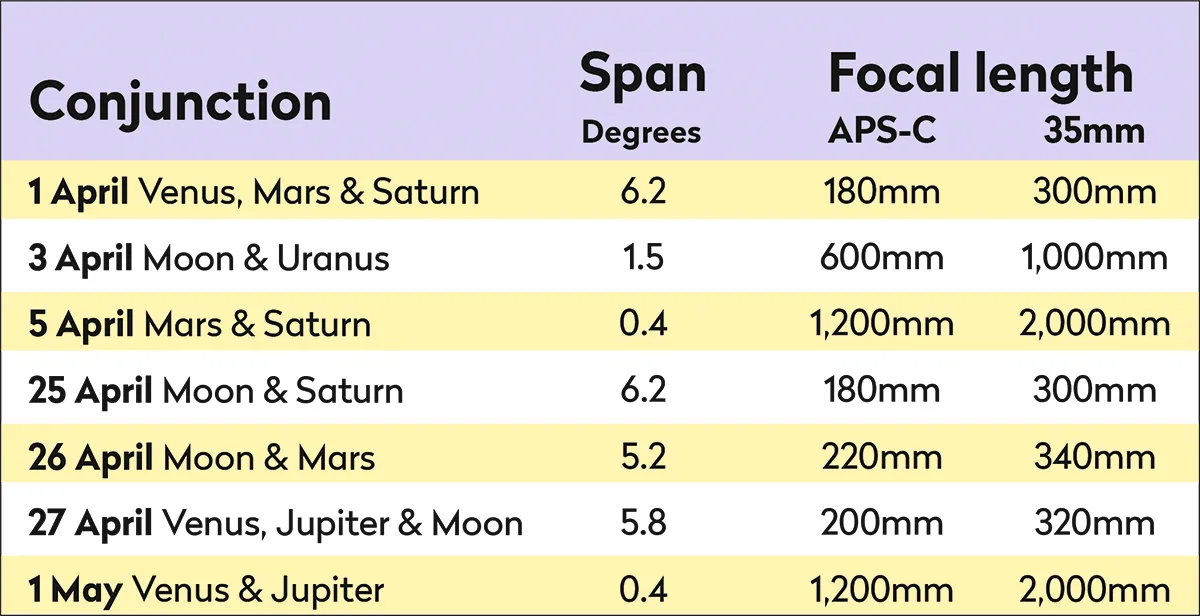
With so many conjunctions this month, it’ll pay to plan ahead. This table shows the approximate minimum span (in degrees) needed to cover the conjunctions and the recommended focal length for the lens or telescope. Aim to include the objects with some space around them to create a relaxed, uncramped shot.
Step 2
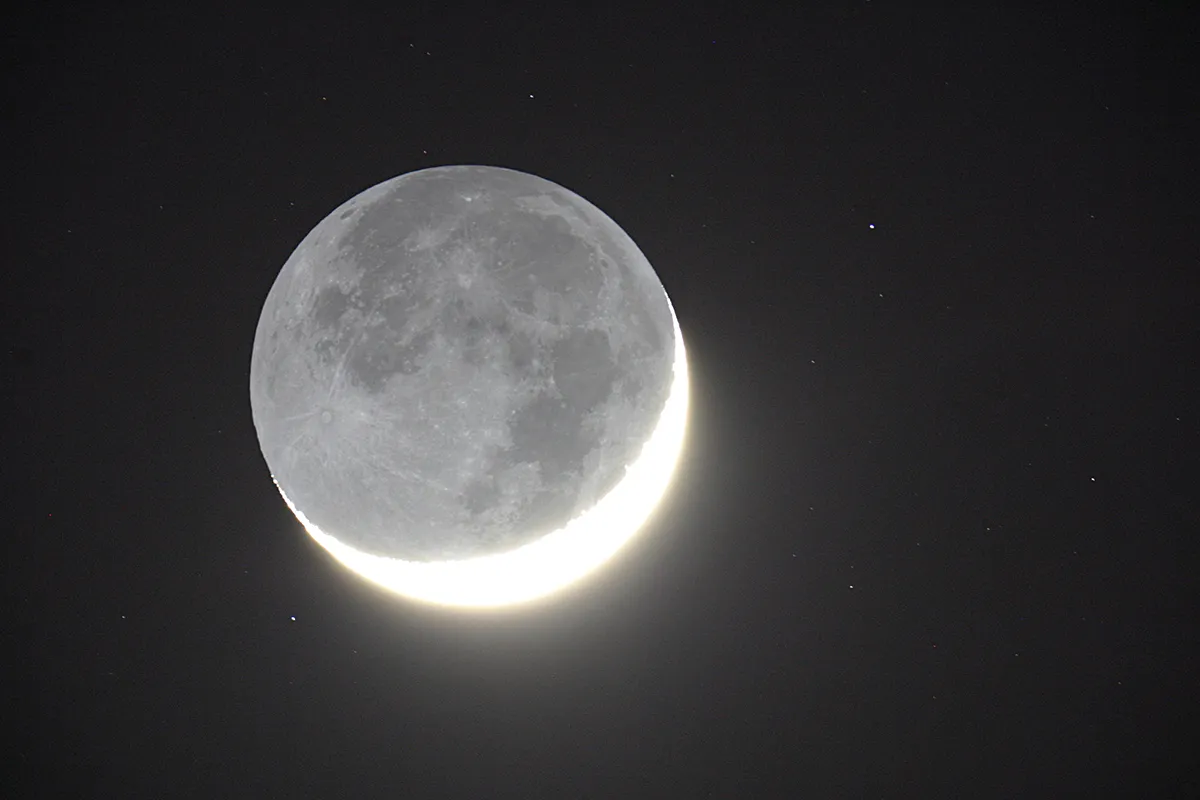
Consider the nature of each conjunction and plan to bring out the best of it. The Uranus and Moon conjunction on 3 April has a large exposure differential; if you expose so that the Moon’s crescent burns out, it will reveal the Moon’s earthshine portion and Uranus at the same time – a great shot if you can pull it off.
Step 3
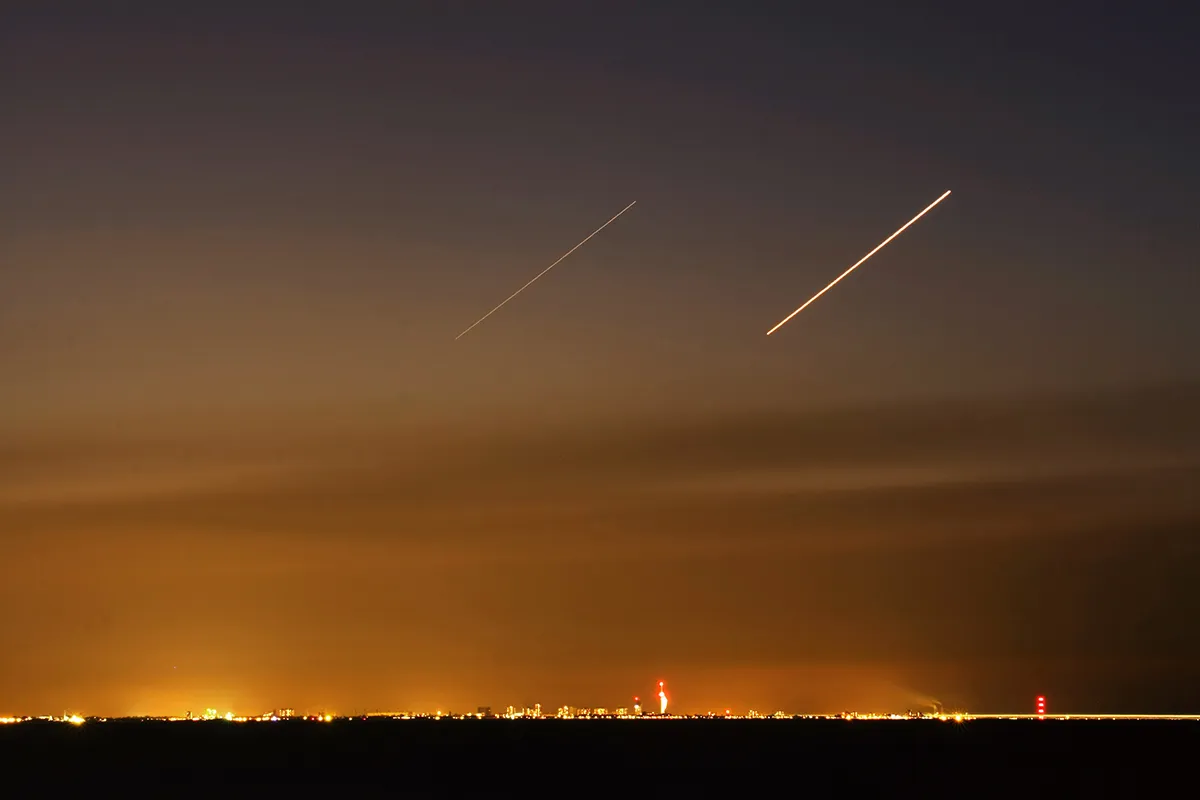
Before the conjunction of Mars and Saturn on 5 April, plan how you can best bring out the colours of the two planets. Allowing them to trail through the frame is one way, as well as deliberately defocusing slightly. The defocused discs will avoid the usually over-exposed core at low magnification.
Step 4

The Venus-Jupiter conjunction at the end of April is a chance to capture both planets through a telescope. The closest approach occurs on 1 May when both planets will appear separated by 22.4 arcminutes. A telescope/camera combo that can capture the Moon’s disc will also be able to capture Venus and Jupiter.
Step 5
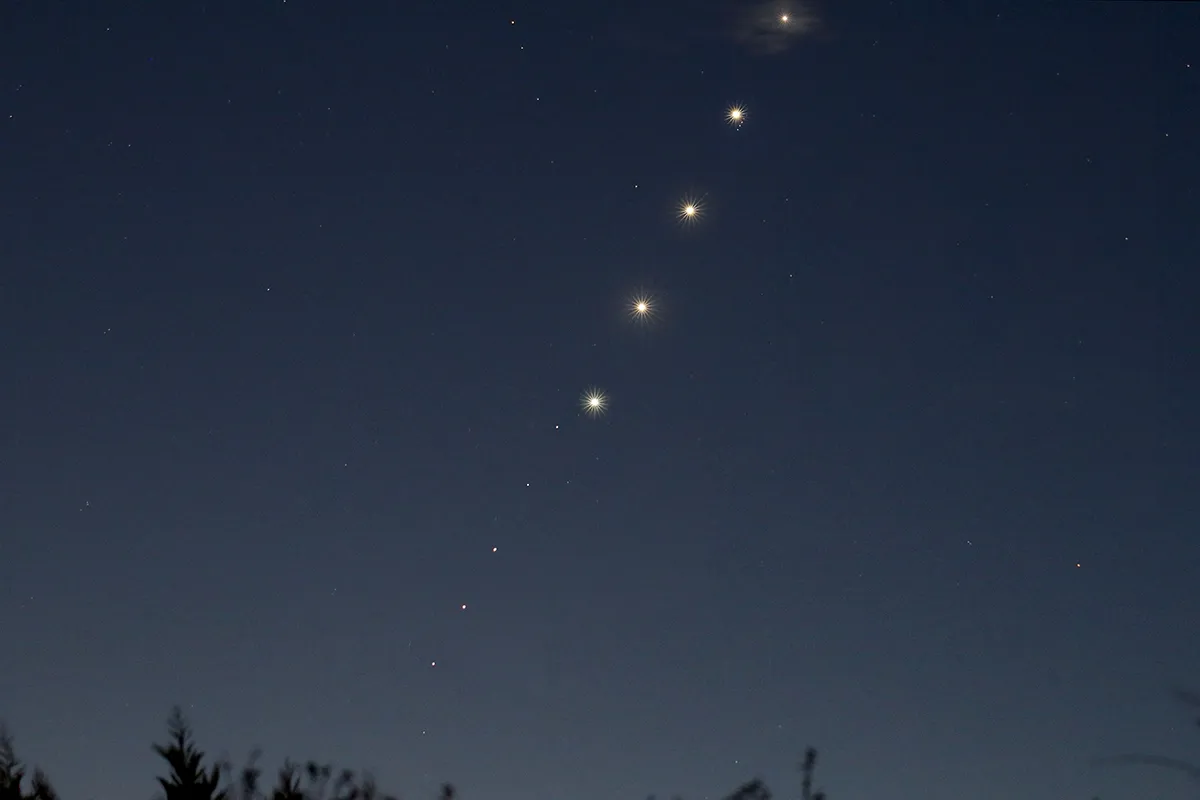
Add interest by trying to capture and combine the closing, closest and separating phases of a conjunction. By using the same setup with an unchanged orientation, take images and load them into layer-based photo-editing software. Align a planet between layers and set the blend mode of the higher levels to lighten.
Step 6
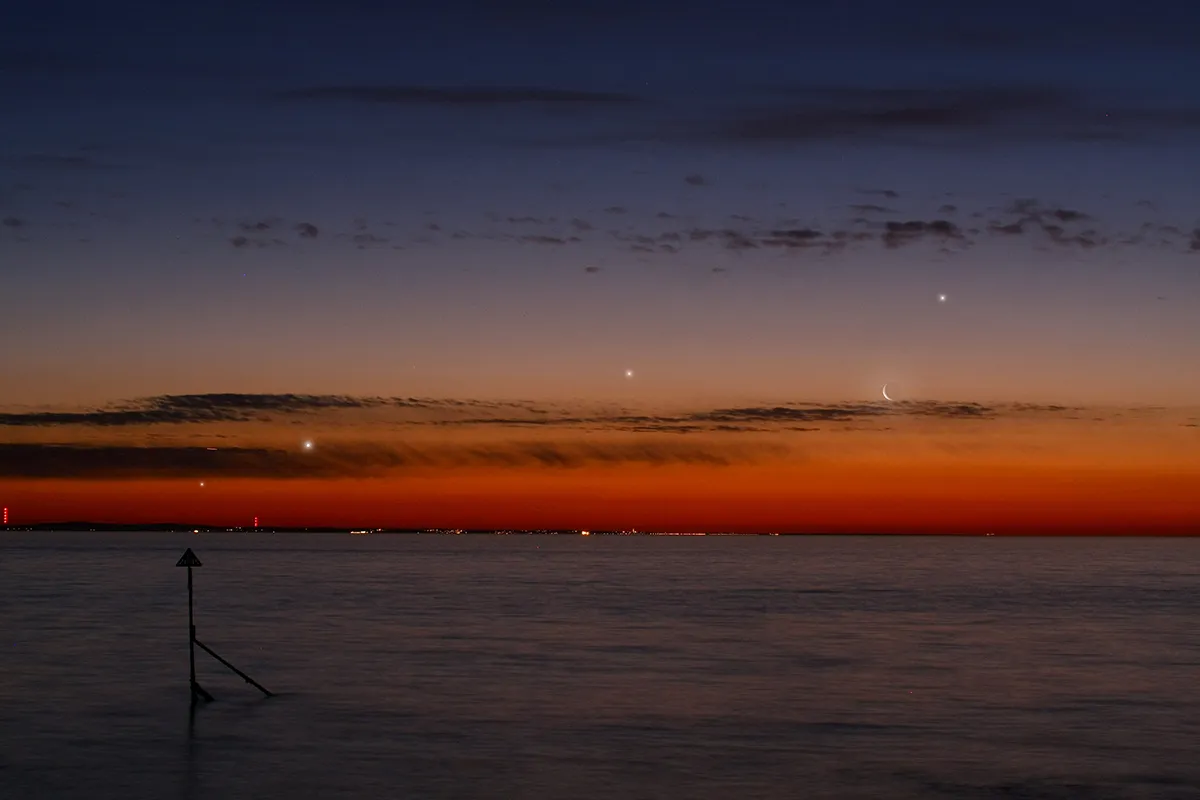
Although it’s interesting to focus on single pairs, there’s also an impressive morning line-up of four bright planets. On 25 April, the line spans 33° and includes the Moon too. A 30mm lens for APS-C cameras (48mm lens for full frame) will catch them all in one shot. Your biggest battle will be the bright dawn twilight.
If you do manage to capture an image of any of these planetary meetings, be sure to send us your images or share them with us via Facebook, Twitter and Instagram.
This guide originally appeared in the April 2022 issue of BBC Sky at Night Magazine.

